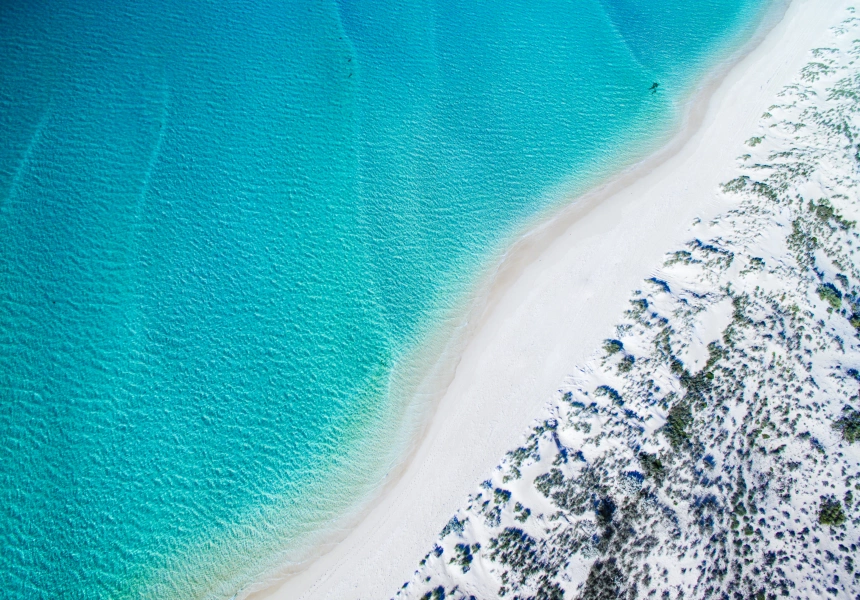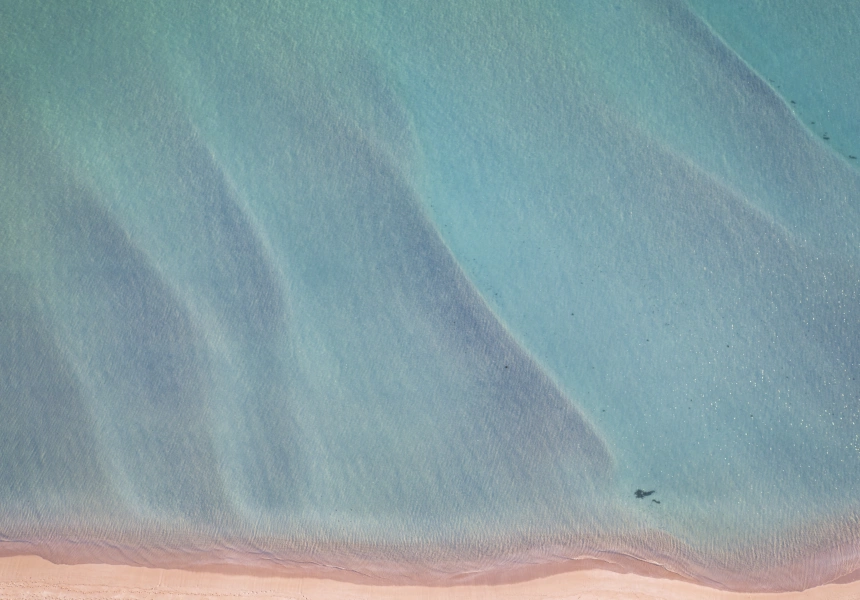Western Australia’s Ningaloo Reef may not have the international profile of the Great Barrier Reef, nor the sheer number of visitors each year. But this Unesco World Heritage-listed gem is no less stunning.
In contrast to the Queensland reef, which is serviced by hordes of charter boasts, accessing the Ningaloo means following a 400-kilometre, corrugated dirt coastal track, or taking one of the few service roads that connects the highway to the white sandy shores. Near Ningaloo you’ll find few facilities and even fewer towns.
With the exception of one or two luxury offerings, most of the accommodation along the reef comes in the form of beachside camping at outback-style stations. Exploring this stretch of coast is a real adventure, and the more prepared you are, the more comfortable your stay will be.
Here, from south to north, are four station stays to park up at on your next trip to the reef.
Quobba Station
Quobba Station is home to the gateway to the Ningaloo Reef. It also marks a tribal boundary between the Baiyangu people, whose country stretches south from here, and the Thalanyji and Yinigudara people.
There are two main campgrounds here: Quobba Station and Red Bluff. Quobba has campgrounds for both self-sufficient campers and caravanners, and shacks and cottages with basic facilities at the homestead. The Blowholes lagoon, just south of the station homestead, offers some the reef’s safest and most spectacular snorkelling.
Red Bluff, also known as “Camp of the Moon”, is home to one of Australia’s premier surf breaks. Campers must be entirely self-sufficient and bring their own water and power supply.
Gnaraloo Station
As you head north from Quobba up the dirt track, a large grid with an overhanging arch marks the beginning of Gnaraloo Station. While Red Bluff is a favourite among hardcore surfers, Gnaraloo’s 3 Mile Camp is also a stone’s throw from world-class waves. 3 Mile Camp offers a few basic facilities, including bore-water showers, fish-filleting facilities and sinks (a luxury!).
As at Quobba Station, the Gnaraloo homestead has more upmarket offerings: rustic one- and two-bedroom cabins built from local stone and tin, shared lodges and the converted shearing quarters, all of which have power and drinking water. They are as close as you can get to the stunning Gnaraloo Bay, which offers boat launching and excellent snorkelling opportunities.
Warroora Station
Heading north from Gnaraloo, you’ll find Warroora (pronounced Wo-rah) Station. While all the campgrounds in this area are on station property, they are managed by the Department of Biodiversity, Conservations, and Attractions, and bookings need to be made online. You can book up to 180 days ahead of your stay. Availability will vary seasonally. Winter months are the busiest time but generally, booking a couple of weeks in advance is enough. Most campsites in Warroora also require campers to bring their own chemical toilet.
The stretch of coast around Warroora is the heart of the reef and is best accessed by four-wheel-drive. It offers excellent fishing and diving. To get a boat in you’ll need to launch off the beach which, with soft sand and strong shore breaks, can be tricky, even with a lightweight tinny.
Whether you choose to head back out to the highway or follow the four-wheel-drive coastal track north, you’ll come to Coral Bay, a verdant, bore-watered miracle in a sheltered bay. Here, you’ll find a restaurant, bar, backpacker’s hostel and large powered caravan park. It is the only service centre on the reef between Carnarvon and Exmouth – so make sure you’re stocked up before you get back on the road.
Ningaloo Station and Exmouth
North of Coral Bay, the ridgeline of the ancient Cape Range begins to dominate the eastern horizon. The country becomes a little more dramatic, with deep gorges carved into the range, and a few freshwater creeks. There are some stunning hikes through the range, with Mandu Mandu, Charles Knife Canyon and Yardie Creek gorges all offering exceptional vantage points out over the reef.
On Ningaloo Station, Winderabandi Point is renowned as one of the most stunning campsites along the length of the reef. Unfortunately it’s only accessible by high-clearance four-wheel-drives. A finger of sand juts out into the Indian Ocean and offers protection from the prevailing southerly winds, with a gin-clear bay on the leeward side.
From here, there are various campgrounds in the national park, which stretches north almost all the way to Exmouth, where you’ll find all the services you need and plenty of cold beer. Our picks? Whalebone offers some of the best pizzas north of Geraldton; Froth Craft is great for a good night out; and the Potshot is a great place for a quiet ale and a few games of pool.


